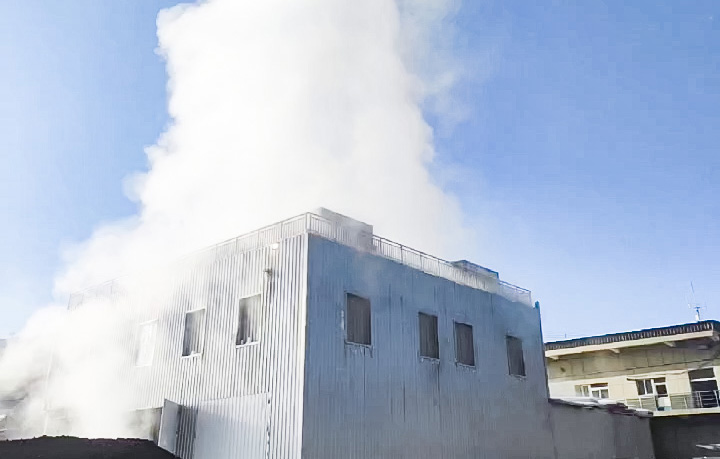Under extremely cold weather conditions, especially in the cold winter, the normal operation of oil and natural gas wells faces severe challenges. Due to being exposed to the external environment, wellhead equipment is highly susceptible to low temperatures, resulting in freezing or icing, which seriously affects the normal transportation and production safety of oil and gas. To address this issue, wellhead heaters, as a type of heating equipment, play a crucial role in ensuring the continuity and safety of wellhead operations.
Working principle and basic functions of wellhead heater
Wellhead heater is a device that prevents equipment from freezing in low-temperature environments by heating fluids, gases, or equipment around the wellhead. Its basic working principle is to use electricity, gas, or other energy sources to drive heating elements, and transfer heat to the surface of wellhead equipment through conduction, convection, or radiation, keeping the equipment temperature within a suitable range and preventing the occurrence of icing or freezing.
Wellhead heaters are usually equipped with intelligent temperature control systems that can automatically adjust the heating intensity according to changes in ambient temperature, ensuring that wellhead equipment maintains a stable working temperature in cold weather. This not only ensures the normal production operation of oil and gas wells, but also extends the service life of equipment.

In extremely cold weather conditions, especially in extremely cold areas, the role of wellhead heaters is particularly prominent. The following points illustrate the key role of wellhead heaters in extremely cold weather:
Preventing equipment freezing: In low-temperature environments, the oil and gas fluids inside wellhead equipment are prone to freezing, leading to pipeline blockages or equipment damage. In severe cases, it can cause production interruptions or equipment failures. The wellhead heater uses continuous heating to prevent the temperature of oil and gas fluids from being too low, ensuring their normal flow in the pipeline and avoiding shutdowns and losses caused by freezing.
Ensuring production safety: Once wellhead equipment is frozen, it may cause a series of safety hazards, such as pipeline rupture, valve failure, etc., which have high risks in wellhead operations. Wellhead heaters can effectively prevent the occurrence of these risks, ensure the safe operation of equipment in extremely cold weather, and reduce the risk of safety accidents in the production process.
Improving operational efficiency: The application of wellhead heaters can reduce downtime caused by equipment freezing, thereby enhancing the overall efficiency of wellhead operations. In extremely cold weather, the wellhead heater ensures the continuous operation of the equipment, avoids frequent equipment maintenance and fault repair, and thus improves production efficiency.
Extending equipment lifespan: Wellhead equipment exposed to extreme cold weather for a long time is prone to accelerated aging or damage due to temperature changes. The wellhead heater effectively reduces wear and damage caused by low temperatures by maintaining the equipment at a stable temperature, thereby extending the service life of the equipment and reducing maintenance and replacement costs.
Although wellhead heaters work well in extremely cold weather, the following points should also be noted when selecting and using them:
Choose the appropriate type of heater: Based on the specific environmental conditions and heating requirements of the oil and gas well, select the appropriate type of wellhead heater (such as electric heating, gas heating, etc.). Factors such as heating efficiency, energy supply, and installation cost of the equipment need to be considered to ensure a reasonable selection.
Regular maintenance and upkeep: The wellhead heater needs to be inspected and maintained regularly to ensure its reliable operation in extremely cold weather conditions. Especially for heating elements and control systems, regular cleaning and testing are necessary to prevent heater failure due to aging or damage of the elements.
Reasonable layout of installation location: The installation location of the wellhead heater needs to be scientifically planned to ensure that the heating effect covers the entire wellhead equipment and pipeline area. Prevent local equipment from not being fully heated due to improper installation location, resulting in local freezing.
Wellhead heaters provide important support for the normal operation of oil and gas wells in extremely cold weather. By selecting and using wellhead heaters reasonably, it is possible to effectively prevent equipment freezing, ensure production safety, improve operational efficiency, and extend equipment lifespan. In the face of increasingly complex environments and extremely cold weather conditions, wellhead heaters are undoubtedly an indispensable and important equipment in oil and gas well sites.







Comment